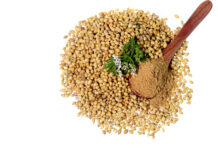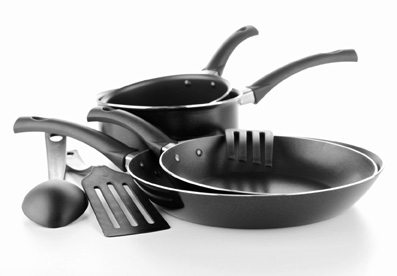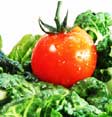
Â
You’re short of pots pans and need to buy some more. What is your greenest option: new or second hand? Which are the most energy efficient, and which might emit risky chemicals? Finally, which would be the most durable? Some of the answers may surprise you.
 If buying second hand, check that the pot comes with a lid, as there is no point in wasting energy every time you use it. Also the bottom should be completely flat, with no noticeable bumps. Any wobble while resting on a flat surface means some part will not be in direct contact with a flat electric hotplate, and heat will be inefficiently transmitted across the air gap.
One reason for buying new is that energy savings are liable to outweigh the embodied energy of the product, assuming it will have a long and active life. Among the metals commonly used in cookware are aluminium (embodied energy 155 Megajoules per kilo), stainless steel (57 MJ/kg), copper (42 MJ/kg), and cast iron (25 MJ/kg.) Copper is the best heat conductor, followed in order by aluminium, iron, steel and glass.
Â
Nickel allergies
Because of its low conductivity, stainless steel is a poor choice. However, where steel is combined with a copper or aluminium base, its energy performance improves significantly, and heat is evenly spread. Stainless steel is alloyed with chromium, contributing to the necessary daily intake of this mineral. Another metal in the alloy is nickel, so people with nickel allergies need to look elsewhere.
The major draw for cast iron is its durability, with pans lasting for generations if looked after well. Once seasoned, they are naturally non-stick. Small quantities of iron get into the food, boosting the body’s iron levels. Frequently used for frying pans, stovetop pans are also available. The big downside for cast iron is its heaviness. Also, it is not recommended for people with the iron overload condition called haemochromatosis.
Aluminium is a neurotoxin with no nutritional benefit. Considered safe in small doses by most authorities, it does however interact synergistically with some other toxins, and the wisest approach would be to keep exposure down to a minimum. Modern aluminium pans are generally anodised, which reduces the level of leaching.
Â
Copper toxicity
Pure copper cookware contributes copper to the diet, but at excess levels copper toxicity can cause health and psychological issues. On balance it is probably safest to avoid. The leaching of copper and aluminium is considerably raised when pans and worn and pitted, and when cooking acidic foods, such as rhubarb, other fruit or tomatoes.
A trendy new kid on the block is titanium, a metal with a mix of disadvantages and benefits. It has an extremely high, embodied energy (360-745 MJ/kg), but has a very poor heat transfer. This is usually offset by the thin base, which is another disadvantage, as it increases the risk of hot spots. Titanium is generally non-stick, lightweight, and damage-resistant.
Glass and ceramic retain heat better than metal, and are ideal for ovens, enabling the thermostat to be turned down by 15 degrees Celsius. While some ceramic and glass ranges are suitable for stovetop use, they are poor heat conductors.
Lead and cadmium
Unfortunately, some ceramic cookware (and ceramic dinner plates) has been found to leach lead and cadmium from the glaze, with products made in China the worst culprits. An example of a ceramic non-stick product range with a reputation for safety is Neoflam, made by a company in South Korea. Unlike pure ceramic cookware, Neoflam is made using six different layers, including aluminium.
However, in 2012 the Israeli consumer protection TV show Kolbotek claimed that testing had revealed the risk of lead and cadmium being leached by a number of companies’ products, including Neoflam, if they were scratched. These claims were vigorously disputed by Neoflam, which launched a lawsuit.
A further controversy surrounds the conventional type of non-stick pan. Favoured for their ease of cleaning, these have the downside of frequently going in the garbage if the coating starts flaking off. In addition, the non-stick coating is typically made with the per fluorinated chemicals PTFE and PFOA.
Â
‘Polymer fume flu’
Cooking at high temperatures using a hot non-stick pan can result in what is called “polymer fume fluâ€, characterised by chills, headache, fever, and nausea. Risks from non-stick cookware can be minimised by keeping the heat down as low as possible, but the safest avenue would be to use something else.
Perhaps surprisingly, the high temperatures at which toxic gases are released can easily be reached during normal cooking: scientific studies indicate that out gassing begins below 200 degrees Celsius. By 360 degrees Celsius, at least six toxic gases are released, including tiny particles of PFOA. This is found in the blood of 98 per cent of Americans, and is damaging to the thyroid. It is also a likely human carcinogen. The use of PFOA is being slowly phased out for safety reasons.
Â
Waterless cooking
An American range called 360 Cookware is made with stainless steel, aluminium and alloy layers, with only the steel coming into contact with the food. It is claimed to operate using waterless vapour technology, where the food is cooked in its own juices, and energy savings quoted by the company range from 50 to 85 per cent. On the downside, the products are expensive, especially if shipping costs to Australia are taken into account.Â
Also highly efficient are pressure cookers, which cook at a higher temperature and pressure, and cut energy use by an estimated 50 to 75 per cent while speeding up the cooking process. Stainless steel is a safer option than aluminium.
Â
Martin Oliver is a writer and researcher based in Lismore (Northern NSW).










































